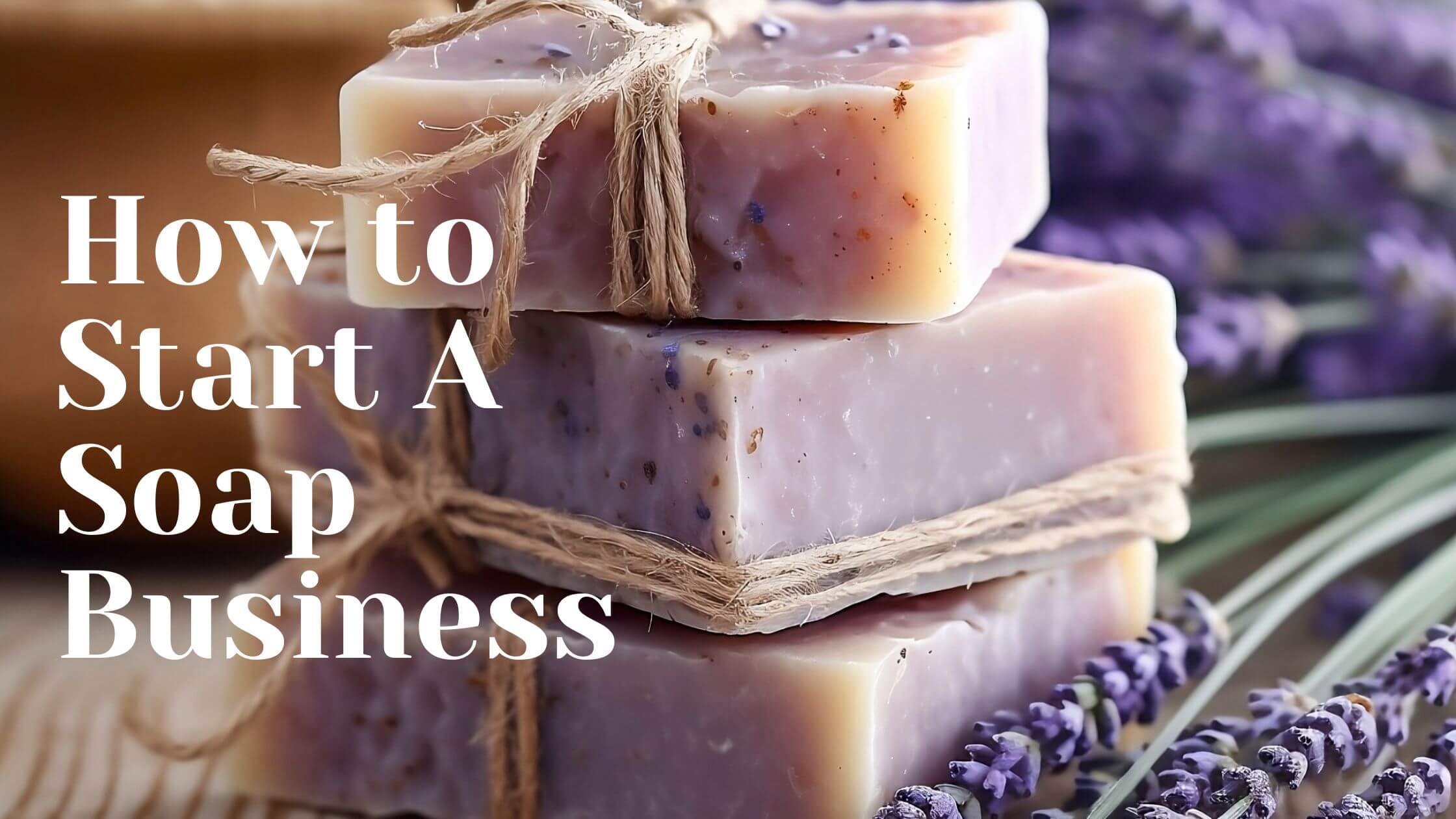Have you ever thought about turning your love for candles into a business? You’re not alone!
Candles have been lighting up more than just homes—they’re illuminating a vibrant, growing market. From cozy, scented candles that help us relax after a long day to eco-friendly options that make us feel good about our purchases, the demand for candles has never been hotter. Whether you’re looking to start a side hustle or dreaming of building a full-time candle brand, this is the perfect time to jump in.
One of the best parts? Starting a candle business doesn’t require a massive investment. With just a few basic supplies, some creativity, and a little business savvy, you can be well on your way to selling your very own candles. It’s a business that offers flexibility—you can work from home, experiment with different designs, and scale at your own pace.
So, if you’ve been thinking about how to take your candle-making skills to the next level, or if you’re brand new to the idea, this guide will walk you through everything you need to know. Let’s get started on your candle business journey, one wick at a time!
A Step By Step Guide To Start a Candle Business
Here is a step-by-step guide to start your candle business. Go through these steps carefully and learn how to SHINE in your candle business.
Step 1: Research the Candle Market
Before diving into any business, it’s crucial to understand the market you’re entering, and candles are no exception. The candle industry has evolved, offering a wide variety of products that cater to different consumer needs, from home décor and gifting to wellness and aromatherapy. To set yourself up for success, spend time researching the trends, your potential competitors, and the preferences of your target audience.
Here is the short research for you. According to the Grand view research, the value of total candle market is about 12 billion. And the good news is the compound market size is increasing at 5.7%.

Understand Current Trends:
Today’s consumers are gravitating toward specific types of candles. Eco-friendly candles, made from natural waxes like soy and beeswax, are in high demand, as are candles infused with essential oils for wellness and relaxation.
Luxury candles are also making waves with unique scents, high-quality packaging, and premium pricing. Staying on top of these trends helps you identify where your products could fit and stand out.
Competitor Analysis:
Look at what other candle businesses are doing well and where they may be lacking. Are there too many brands focusing on vanilla and lavender scents? Maybe that’s an opportunity for you to introduce unique, custom blends. How do they market their candles, and what kind of packaging do they use?
Studying competitors will help you find your unique selling proposition (USP)—the thing that makes your candles different and better.
Identify Your Target Audience:
Who do you want to sell your candles to? Home décor enthusiasts? People seeking self-care products? Those shopping for gifts? Defining your target audience will shape everything from your branding and packaging to the types of candles you create. Conduct surveys, talk to potential customers, and research demographics that align with your candle products.
Step 2: Develop Your Business Plan
Now that you have a clearer picture of the market, it’s time to build a solid business foundation by creating a business plan. Your business plan is like a roadmap—it will guide you through the early stages and help you stay focused as you grow.
Define Your Business Goals:
Start by setting specific goals for your candle business. Are you aiming for a side hustle or planning to scale it into a full-time venture? Setting realistic short-term and long-term goals will keep you on track.
For instance, your short-term goal might be to sell your first 100 candles in three months, while a long-term goal could be opening your own retail shop in a few years.
Choose a Business Name and Legal Structure:
Your business name should reflect your brand’s personality and target market. It’s also important to check if the name is available (for domain names, social media handles, and trademark purposes).
I have listed some candle business name ideas for you. You can check to get ideas.
Then, decide on your business structure: Are you going to operate as a sole proprietor, an LLC (Limited Liability Company), or another entity? Each structure has different legal and tax implications, so it’s a good idea to consult with a business advisor or attorney.
- Budgeting: A detailed budget will help you plan your expenses and determine how much initial capital you’ll need. Your budget should include:
- Start-up costs: Equipment (melting pots, molds), raw materials (wax, wicks, fragrance oils), packaging, and labeling.
- Operational costs: Monthly supplies, rent (if you’re not working from home), and shipping.
- Marketing expenses: Website costs, photography, advertising, and any promotional activities.
Pricing Strategy:
Pricing your candles can be tricky. You want to cover your costs, make a profit, and still stay competitive.
Step 3: Choose Your Candle Niche
Choosing a niche is key to differentiating yourself in the candle market. Your niche will determine the type of candles you make, the materials you use, and the audience you attract. It helps you focus on creating a specific kind of product that appeals to a particular group of customers.
Types of Candles You Can Make:
There are several types of candles, each with its own audience:
-
- Soy Candles: Popular for their eco-friendliness and clean burn. These candles appeal to environmentally conscious buyers.
- Beeswax Candles: Often considered a luxury, beeswax burns longer and purifies the air. It’s great for people who prioritize sustainability and natural ingredients.
- Paraffin Candles: More affordable and easier to work with, paraffin candles are best suited for budget-conscious customers.
- Aromatherapy Candles: Infused with essential oils, these are marketed for relaxation, meditation, or even health benefits.
- Scented vs. Unscented: Scented candles are the most common, but unscented candles can appeal to customers with sensitivities or those who want candles purely for decoration.
- Pick a Theme for Your Brand: Your theme should reflect your target audience and the kind of experience you want your candles to offer. For example:
- Luxury: Think high-end packaging, exclusive scents, and premium pricing. This works well for special occasion candles, like wedding or holiday-themed products.
- Eco-friendly: Use sustainable materials (soy wax, recycled packaging) and emphasize your environmental responsibility. This attracts eco-conscious consumers.
- Wellness: Candles with calming, soothing fragrances that promote relaxation and mindfulness can appeal to those looking for wellness products.
- Customization Options: Offering personalized or customized candles can set you apart. For instance, you could create candles tailored to specific events like weddings, birthdays, or corporate gifts. You might also allow customers to choose their scents and labels, adding a personal touch to your product line.
Step 4: Start Making the Candles
Now comes the exciting part—actually making the candles! Craft not only high-quality but also safe candles to provide nothing but the best to your customers.
Gather Basic Candle-Making Supplies:
You’ll need to gather a few essential items to start making candles. You’ll want to decide early on whether you’ll source ingredients locally or buy in bulk online. Buying locally can give you more control over quality, but bulk purchases from online suppliers often reduce costs.
Create Your First Batch:
Once you have all the materials, start making your candles. When you are done, always test burn your candles to ensure they burn evenly and the scent throw is strong.
Experimenting with Scents and Colors:
A key to standing out in the candle market is offering unique, high-quality scents. Don’t be afraid to experiment with fragrance blends to create something unique. Test different scent combinations, and always keep track of your recipes so you can replicate your best creations. Similarly, playing with colors and designs (e.g., layering colors or adding dried flowers) can give your candles an artistic edge.
Step 5: Branding and Packaging
In today’s competitive market, the quality of your candles isn’t the only thing that will get you noticed—your branding and packaging play a huge role too. They help communicate your brand’s story, attract the right audience, and ultimately, turn casual buyers into loyal customers.

- Create a Memorable Brand: Branding goes beyond a catchy name or logo—it’s about creating a cohesive identity that resonates with your target audience. Your brand should reflect your niche, values, and what makes your candles special.
- Designing Eye-Catching Packaging: Packaging is often the first thing people notice about your candles, so make it count! Think about how you can make your candles visually appealing while staying true to your brand. If you’re focusing on luxury, for example, opt for elegant glass jars with metallic finishes. For an eco-friendly brand, use recyclable materials like kraft paper or minimalist labels.
- The Importance of Labeling: Clear and compliant labeling is essential, not just for aesthetic reasons but for safety. Make sure your labels comply with local regulations for products that involve fire, especially if you’re selling in different states or countries. Include safety warnings, burning instructions, and anything else required by law.
Step 6: Set Up Your Candle Business Legally
Before you start selling your candles, it’s important to get your business set up legally. This protects you from liability, ensures you comply with local regulations, and helps you stay on track with taxes and other obligations.
- Register Your Business and Get Necessary Licenses: Depending on your location, you’ll likely need to register your candle business with local or state authorities. This process is relatively straightforward and often involves choosing a business structure (LLC, sole proprietorship, etc.) and obtaining a business license.
- Insurance for Your Candle Business: Having insurance is crucial, especially since candles are a product that involves fire. You’ll want to look into getting general liability insurance, which protects your business from lawsuits if someone gets injured or if property damage occurs. You may also want product liability insurance to cover any claims related to the safety or quality of your candles. Insurance gives you peace of mind, knowing your business is protected against potential risks.
- Health and Safety Regulations: In some regions, especially if you’re working with certain waxes, dyes, or fragrances, you may need to follow specific health and safety regulations. If you plan to sell candles at a retail level or through wholesale channels, these regulations are even more critical. Make sure to research and comply with the safety standards required for your products.
Step 7: Build an Online Presence
In today’s digital world, having a strong online presence is key to reaching potential customers and growing your candle business. Whether you’re selling through your own website, on social media, or through an e-commerce platform, creating an attractive and user-friendly digital presence is crucial for your business’s success.

- Create a Website for Your Candle Business: Your website is the central hub for your online candle store. Even if you sell on other platforms, having a dedicated website gives you complete control over your brand, customer experience, and sales process.
- Social Media Marketing: Social media is an excellent tool for building brand awareness, connecting with customers, and driving sales. Platforms like Instagram, Facebook, TikTok, and Pinterest are especially effective for visually-driven products like candles.
- Leverage Search Engine Optimization (SEO): SEO is all about making sure your website appears in search engine results when people search for products like yours. By optimizing your website content with relevant keywords (like “handmade soy candles” or “natural scented candles”), you can drive more organic traffic to your site.
Step 8: Market and Promote Your Candle Business
Once your candles are ready to sell, it’s time to get them in front of customers. A strong marketing strategy is essential for driving sales and growing your business. From paid advertising to community building, there are many ways to effectively market your candles.
- Email Marketing: Email marketing is a highly effective way to engage customers, especially those who have already expressed interest in your products by signing up for your newsletter or making a purchase. Use email marketing platforms like Mailchimp, Klaviyo, or ConvertKit to keep your audience informed.
- Collaborations and Influencer Marketing: Partnering with influencers and other brands can help increase your reach and build credibility. Look for influencers in the lifestyle, home décor, or wellness space who align with your brand values.
- Paid Advertising: Investing in paid ads can drive traffic to your website and increase brand awareness. Platforms like Facebook, Instagram, and Google Ads allow you to target specific audiences based on their interests, behaviors, and demographics.
Attend Local Markets and Pop-Up Shops: If you want to build a local following, attending craft fairs, farmers markets, or pop-up events can be a great way to promote your candles. These events give customers the chance to see and smell your candles in person, which is a huge selling point. Plus, it’s an opportunity to network with other small business owners.
Step 9: Manage Inventory and Fulfillment
Once your business starts growing, managing inventory and fulfilling orders efficiently becomes a top priority. Keeping track of your supplies, shipping out products on time, and maintaining stock levels are crucial for ensuring a smooth operation.
- Inventory Management: Tracking your inventory—both raw materials and finished candles—is essential to avoid over- or understocking. You don’t want to run out of wax just before a big sales event, nor do you want to be stuck with excess stock that takes up space and ties up capital.
- Shipping and Fulfillment: Efficient shipping and fulfillment are crucial for keeping customers happy and maintaining positive reviews. You’ll need to develop a fulfillment process that ensures orders are shipped out on time and in perfect condition.
- Consider Outsourcing Fulfillment: As your business grows, you might find it challenging to keep up with the demand for packing and shipping orders. At this stage, you could look into outsourcing your fulfillment to a third-party logistics (3PL) company that can handle the shipping process for you. This frees up your time to focus on other areas of the business.
Step 10: Grow and Scale Your Business
Once your candle business is up and running, you’ll likely start thinking about how to grow and scale. Expanding your product line, increasing your customer base, and exploring new sales channels are key ways to take your business to the next level.
- Diversify Your Product Line: Expanding your product line is a great way to attract new customers and encourage repeat purchases. Create limited-edition candles for different seasons or holidays, or add various other types of candles to your collection. Also, consider creating candles with additional benefits, such as aromatherapy candles infused with essential oils and others.
- Increase Your Online Presence: As your business grows, continuing to build your online presence will help you reach more customers.
- Sell Through Additional Channels: Beyond your website and local markets, consider expanding to other sales channels like Etsy, Amazon, and others.
Wrapping Up
Starting a candle business can be both a rewarding and creative endeavor. By following the steps we’ve covered—researching your market, honing your craft, building a strong brand, and strategically marketing your products—you’ll be well on your way to turning your passion into a thriving business.
Remember, success doesn’t happen overnight. Be patient with the process, experiment with different scents and styles, and listen to your customers’ feedback to continuously improve your offerings. As your business grows, keep refining your online presence, expanding your product line, and seeking out new opportunities to connect with your audience.
With dedication, creativity, and a clear strategy, you can turn your candle-making passion into a profitable venture. So light your wick and get started—there’s no better time than now to bring your vision to life!







